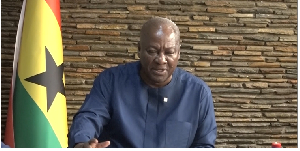Ghana's remittance inflows will rise to about $2.8 billion by 2020, according to Institute of Chartered Accountants England and Wales (ICAEW).
Remittances’ ratio to total exports is set to decline to 15.2 percent as Ghana’s exports rise sharply over the forecast period, driven mostly by higher oil production and prices.
According to Economic Insight: Africa Report, remittance inflows will, however, remain an important source of foreign exchange inflows moving forward, forecasting remittance inflows of about US$5 billion by 2030, representing a compound annual growth rate of 6.5 percent per annum over the 2018-30 period.
“Our forecasts – assuming emigrant population proportions in their respective destination countries remain constant at 2017 levels, emigration to these destinations grows at the same rate as the 20-35-year-old population in Ghana and considering host country GDP per capita growth forecasts – indicate that Ghana’s remittance inflows will rise to just below $2.8bn by 2020.”
The report noted that the robust growth in remittances is ascribed to the fact that Ghana’s young adult population is expected to expand rapidly over the forecast period, and this age cohort usually makes up for the bulk of emigrants. Also, while Ghana’s growth prospects remain favourable, significantly higher income levels in countries such as the US (Ghanaians’ preferred destination in 2017), will continue to incentivise emigration.
Remittance flows play an important role in terms of Ghana’s external accounts. According to the World Bank, remittance inflows amounted to $2.5 billion in 2014: equal to roughly 18.6 percent of total exports that year. Remittance inflows subsequently declined to $2.2 billion by 2017, equivalent to 15.8 percent of exports.
On the performance of the Ghanaian economy, it stated that the Ghanaian economy performed exceptionally well last year, with real GDP growth rising to 8.5 percent in 2017. That said, “Headwinds have mounted thus far this year. Growth slowed markedly from 8.1 percent year-on-year in the final quarter to 6.8 percent year-on-year in quarter one, due to maintenance-related disruptions to oil output and especially weak agricultural performance.”
Inflation
The disinflation trend, however, persisted early in 2018. In July, consumer price inflation was 9.6 percent year-on-year, the fourth month in a row that it has fallen within the central bank’s 6 percent – 10 percent target range.
However, higher fuel costs are now exerting upward pressure on domestic prices, and the weak cedi exacerbates the situation, the report emphasized.
These upside inflation risks it noted have prompted the central bank to put the brakes on its loosening cycle.
Inflation is nonetheless forecast to decline from an average of 12.4 percent in 2017 to 10.2 percent in 2018.
Fiscal economy
Fiscal revenues continued to under-perform during the first five months of the year.
This prompted the government to rein in spending to stick to deficit targets. During the mid-term budget review, the government also announced certain reforms aimed at boosting revenues including new taxes on luxury vehicles and the introduction of an additional personal income tax band (35 percent) for individuals earning more than GH¢10,000 a month.
These revenue-side reforms the report said will not be sufficient to see the government meet its 4.5 percent of GDP deficit target this year.
Gross reserves come under pressure
Reserves have also come under more pressure this year, falling to just under US$6 billion by the end of April 2018. The recent Eurobond sale did not provide a significant boost, as a large proportion of the proceeds was used to redeem existing external obligations.
The report added reserves will likely remain under pressure in the third quarter, but cocoa loan proceeds and IMF credit should provide some reprieve in the final quarter. Aside from higher interest rates in the US affecting capital flows, mounting current account pressures have also weighed on reserves to an extent.
Business News of Thursday, 20 September 2018
Source: thefinderonline.com

















